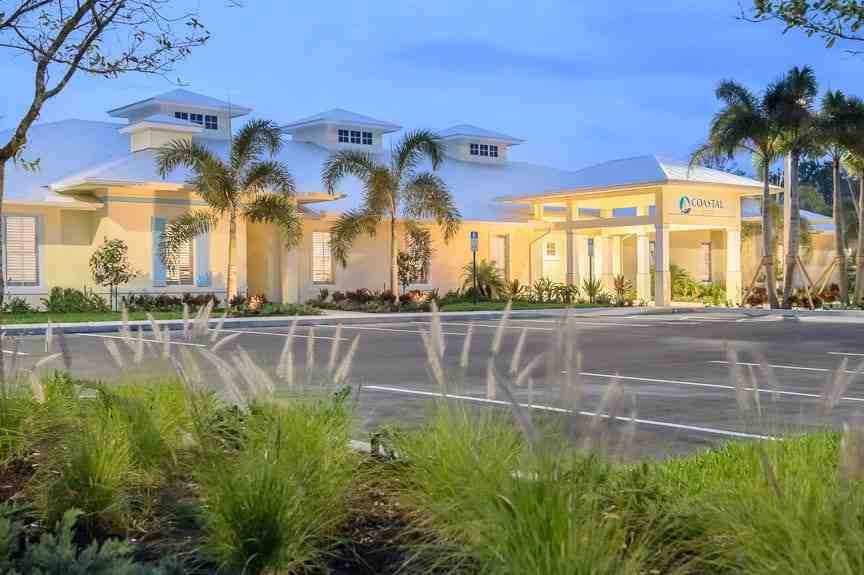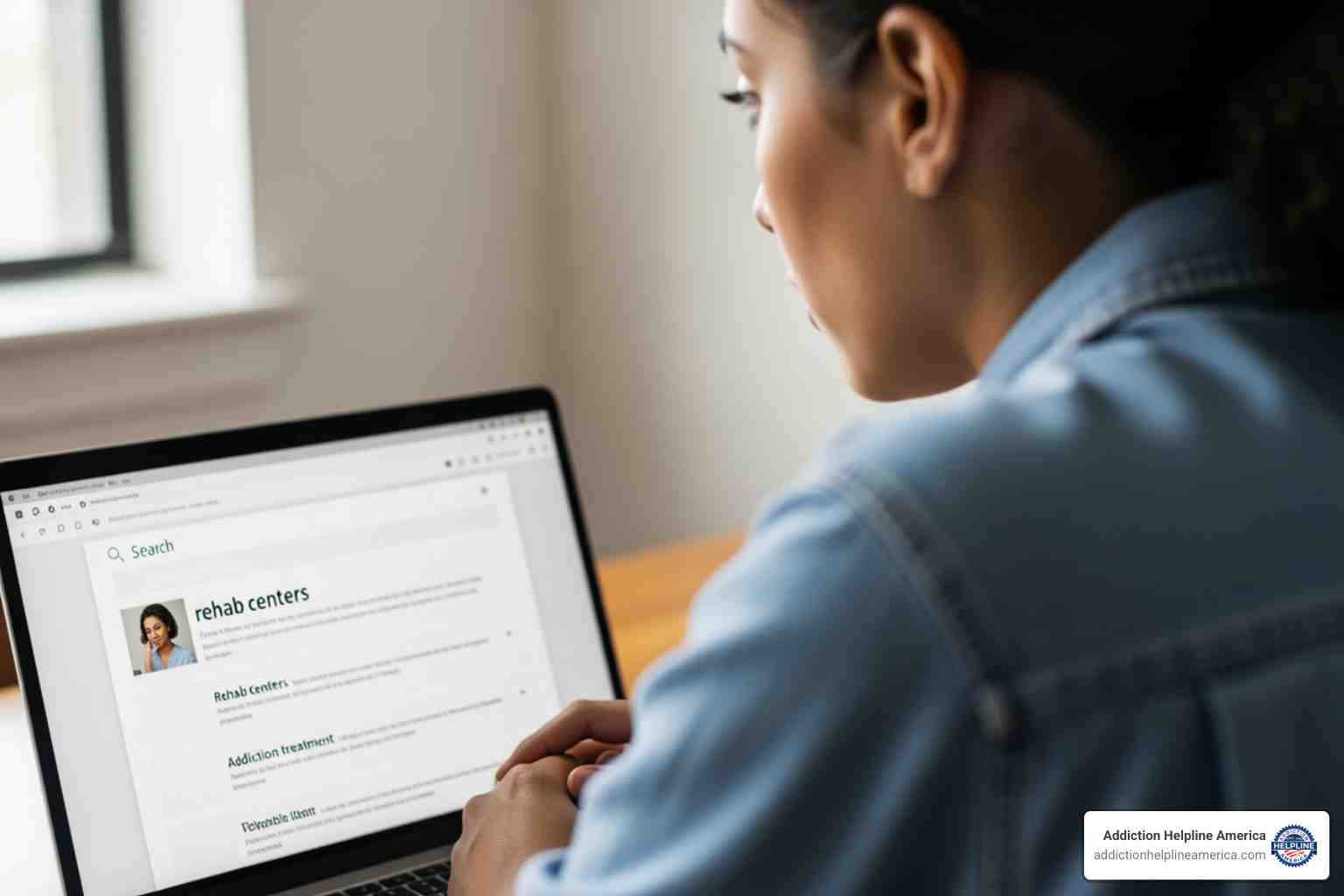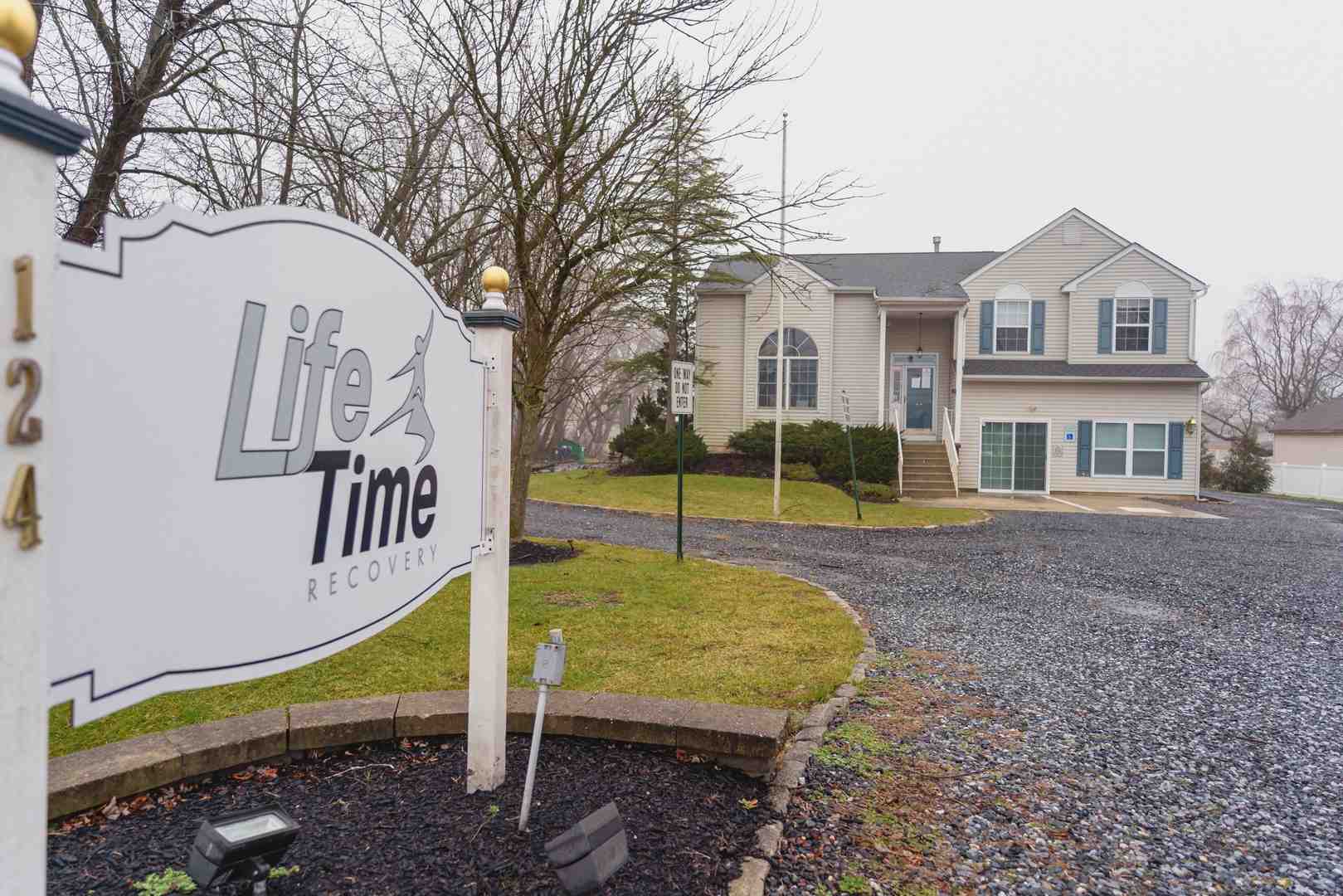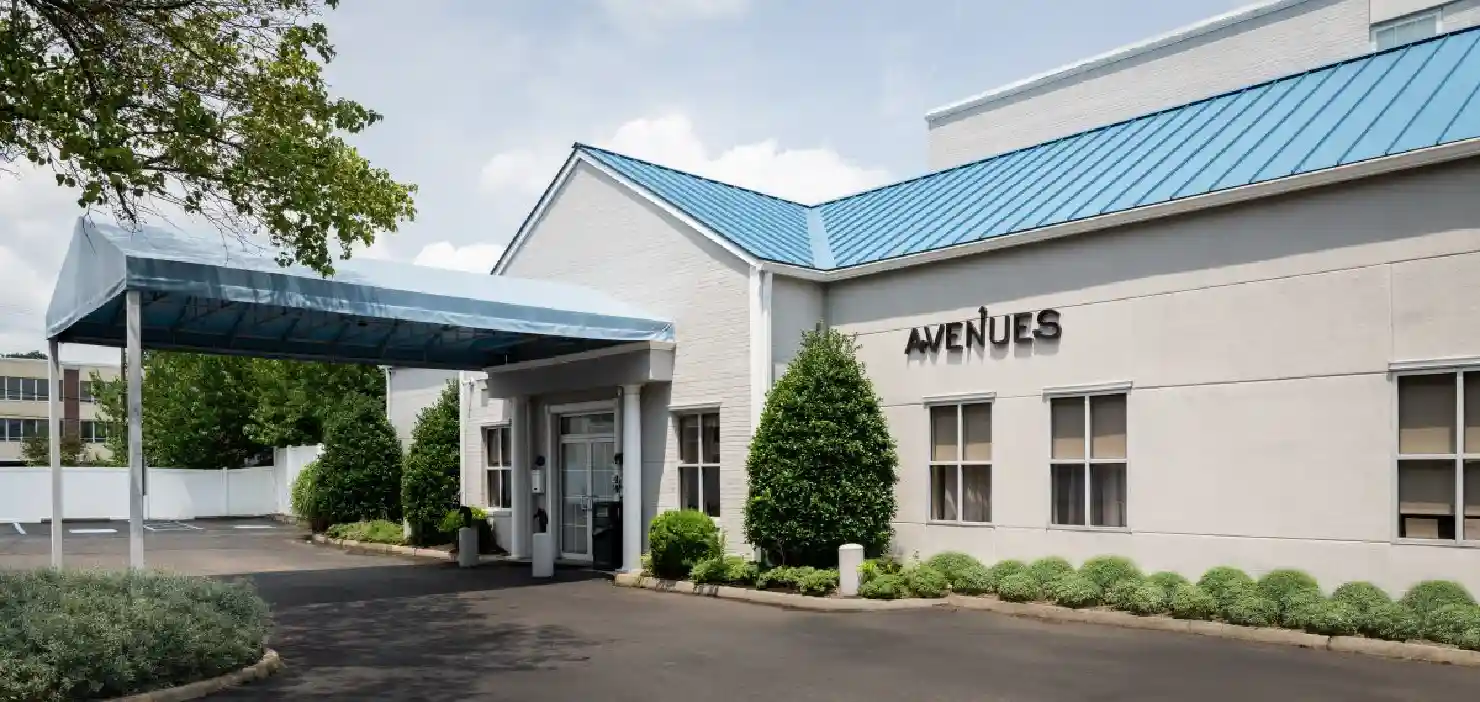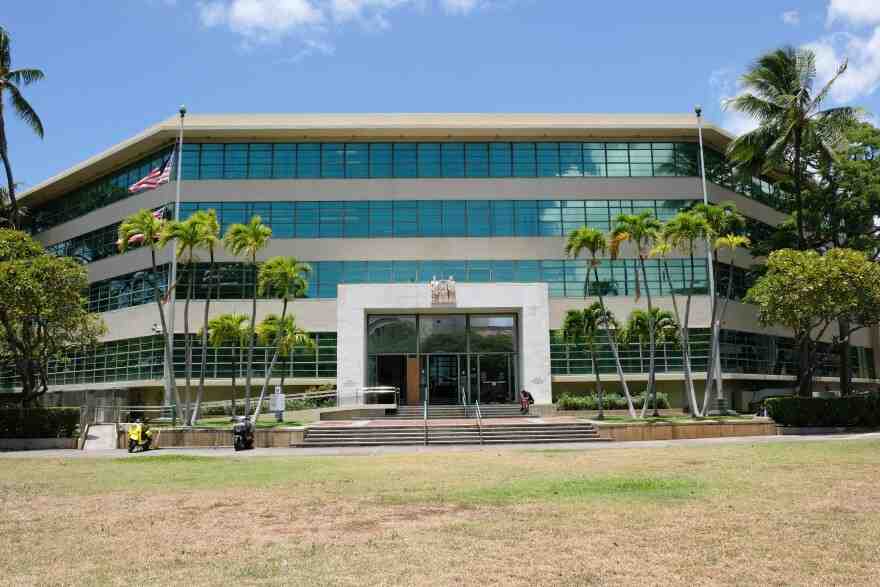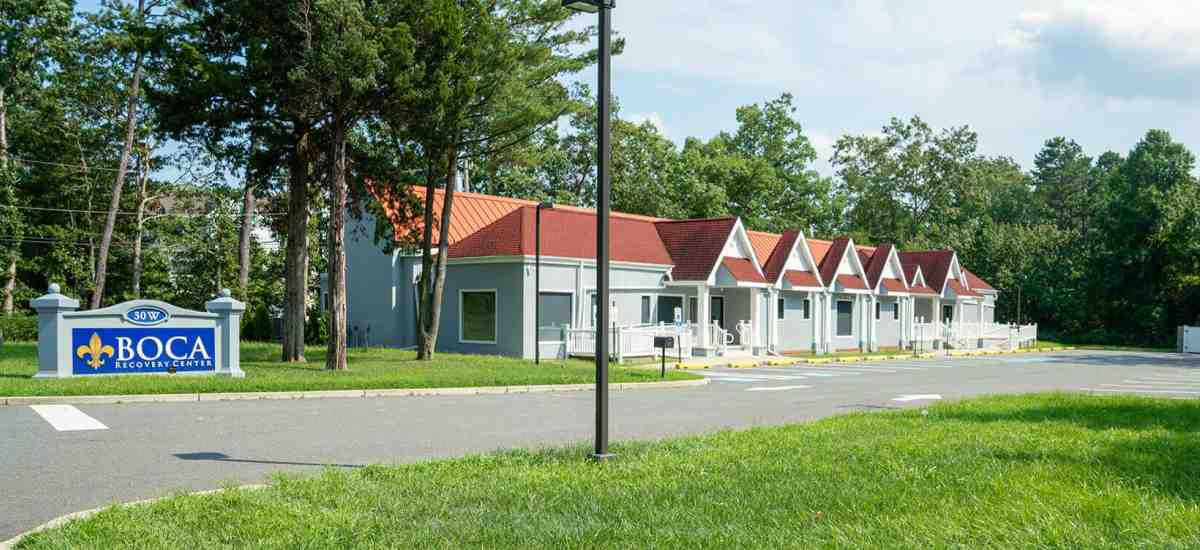
Your First Step Towards a New Beginning
Figuring out how to find a drug rehab facility can feel overwhelming when you or a loved one is struggling. This guide simplifies the process.
5 Simple Steps to Find a Drug Rehab Facility:
- Assess Your Needs – Identify substances used, co-occurring conditions, and recovery goals.
- Explore Program Types – Learn about detox, inpatient, outpatient, and medication-assisted options.
- Research and Vet Facilities – Use reliable resources and verify credentials.
- Steer Payment Options – Check insurance, explore state-funded programs, or find sliding scale fees.
- Begin the Admission Process – Contact facilities, complete assessments, and prepare for intake.
Millions of Americans seek treatment for substance use disorders annually. However, a significant treatment gap remains—not due to a lack of facilities, but the challenge of finding the right one. Addiction is a treatable chronic disease, and recovery is possible.
Finding the right facility is critical, as programs vary widely. You’ll need to consider the type of care, detox needs, mental health support, insurance, and specialized programs.
At Addiction Helpline America, we connect individuals with the right treatment resources. Our 24/7 helpline, treatment referrals, and educational support simplify the process. Our experienced team is here to guide you through every step.
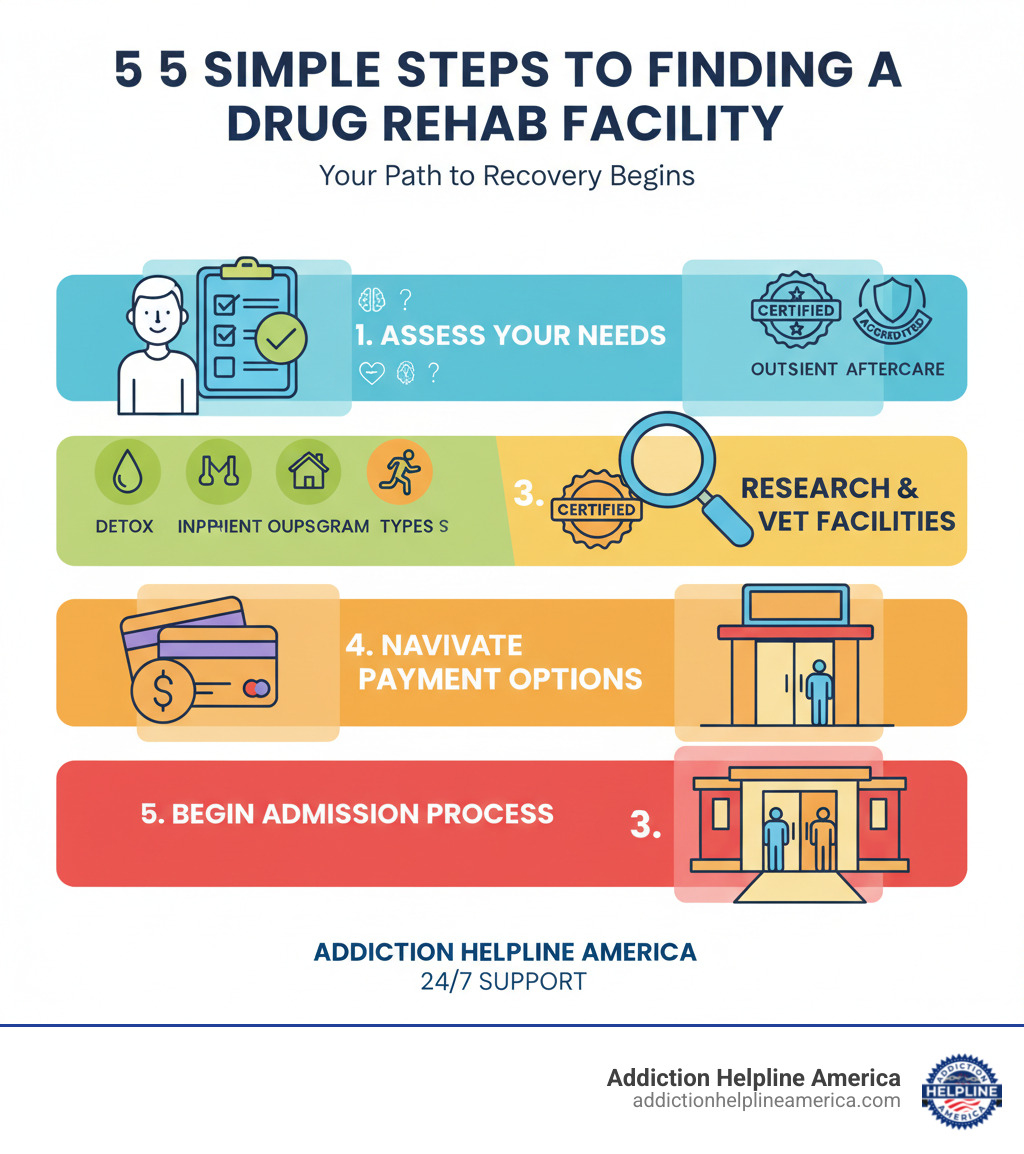
Easy how to find a drug rehab facility glossary:
Step 1: Assess Your Unique Needs and Goals
Before you can find a drug rehab facility, you must honestly assess your current situation. This self-evaluation is the foundation for a successful recovery journey.
Common signs that professional help is needed include trying to quit but failing, strained relationships, problems at work or school, worsening health, and hiding substance use from loved ones. Your substance use history—what you use, how much, and for how long—is a key factor in determining the level of care you need.
At Addiction Helpline America, our first step is to understand your unique situation. We ask essential questions to help us connect you with a program designed for your specific needs.
Understanding Co-Occurring Disorders
About half of those with a substance use disorder also have a mental health condition like depression, anxiety, PTSD, or bipolar disorder. This is called a dual diagnosis or co-occurring disorder. One condition often fuels the other, creating a cycle that’s difficult to break without professional help.
For example, a person might use alcohol to self-medicate anxiety, but the alcohol ultimately worsens the anxiety, leading to more drinking. Treating both conditions together is crucial for success. Addressing the addiction while leaving a mental health condition untreated makes relapse much more likely.
Integrated treatment involves professionals who understand both addiction and mental health. When we help you find a drug rehab facility, we prioritize centers that offer this comprehensive, dual diagnosis care.
Determining Your Treatment Goals
What does recovery look like for you? For many, the goal is complete abstinence. For others, it might start with harm reduction strategies. Beyond sobriety, common goals include:
- Rebuilding relationships with family and friends.
- Achieving career stability by returning to work or school.
- Improving physical and mental health.
- Developing new coping skills for personal growth.
Creating a clear vision for your future helps treatment providers design a plan that is meaningful to you. If family healing is a priority, we’ll look for programs with strong family therapy components. Your goals are the compass for your recovery journey.
Step 2: Explore the Different Types of Rehab Programs
Once you understand your needs, it’s time to explore the types of treatment available. Addiction treatment is a continuum of care, meaning your support can change as you progress in recovery. Understanding these options is a key part of figuring out how to find a drug rehab facility that fits.

Medical Detoxification (Detox)
If your body is physically dependent on substances like alcohol, opioids, or benzodiazepines, stopping suddenly can be dangerous. Medical detox is the process of safely clearing these substances from your body while managing withdrawal symptoms under 24/7 medical supervision.
Detox is not treatment itself; it’s the essential first step that prepares you for therapy. It typically lasts three to seven days. Once complete, you are physically and mentally ready to begin the work of recovery.
Inpatient vs. Outpatient Treatment
After detox, you’ll move into the core of recovery work. The main choice is between inpatient and outpatient treatment.
Inpatient (residential) treatment involves living at a facility 24/7 in a structured, supportive environment, free from daily triggers. It’s ideal for those with severe addiction, co-occurring disorders, or an unsupportive home environment.
Outpatient treatment allows you to live at home and attend therapy sessions several times a week, offering the flexibility to maintain work or family commitments. Partial Hospitalization Programs (PHP) are more intensive, meeting daily for several hours, while Intensive Outpatient Programs (IOP) are less frequent.
| Feature | Inpatient (Residential) Treatment | Outpatient Treatment |
|---|---|---|
| Intensity | High; 24/7 care and supervision in a structured environment. | Varies; scheduled sessions several times a week, allowing clients to live at home. |
| Structure | Highly structured daily schedule including therapy, education, and activities. | Less structured; clients attend therapy sessions while managing daily responsibilities. |
| Living Situation | Resides at the treatment facility. | Lives at home or in a sober living environment. |
| Cost | Generally higher due to accommodation, meals, and round-the-clock care. | Generally lower, as it doesn’t include residential costs. |
| Ideal Candidate | Individuals with severe addiction, co-occurring mental health disorders, unstable home environments, or those needing intensive support. | Individuals with less severe addiction, strong support systems at home, or those transitioning from inpatient care. |
There is no single “better” option—only what’s best for you. Many people transition from inpatient to outpatient care to gradually apply their new skills in the real world.
Understanding Medication-Assisted Treatment (MAT)
Medication-Assisted Treatment (MAT) combines FDA-approved medications with counseling to treat substance use disorders, particularly for opioids and alcohol. These medications are prescribed by medical professionals to normalize brain chemistry, reduce cravings, and block the euphoric effects of drugs. This gives your brain a chance to heal while you focus on therapy.
Common MAT medications include buprenorphine (Suboxone), methadone, and naltrexone (Vivitrol). Research shows that MAT improves treatment retention and reduces the risk of overdose.
When you work with Addiction Helpline America to find a drug rehab facility, we can connect you with programs in our network that offer comprehensive MAT services and help you determine if this approach is right for you.
Step 3: How to Find a Drug Rehab Facility and Vet Its Quality
Now it’s time to find and evaluate potential treatment centers. How to find a drug rehab facility requires more than a simple internet search; it demands careful research to avoid unethical operators who prioritize profit over patients. Think of it as detective work to ensure you find genuine, quality care.

Where to Find Reliable Information
Starting your search with trusted sources is key.
- Addiction Helpline America: Our 24/7 helpline provides free, confidential guidance. We’ve vetted treatment centers across the country and can match you with a program that fits your needs.
- SAMHSA’s National Helpline: This government-funded resource at 1-800-662-HELP (4357) and its SAMHSA National Helpline page and FindTreatment.gov website offer reliable, anonymous treatment referrals.
- Medical Professionals and Support Groups: Your doctor or therapist can provide trusted referrals, and members of groups like AA or NA can offer real-world insights.
Verifying Credentials and Quality
A beautiful website doesn’t guarantee quality. Dig deeper to verify credentials.
- Accreditation: Look for accreditation from The Joint Commission or CARF. This is a voluntary, rigorous evaluation that holds facilities to high standards, going beyond basic state licensing.
- Staff Credentials: Ensure the treatment team includes licensed and certified professionals, such as licensed drug and alcohol counselors (LADC) and certified co-occurring disorders professionals (CCDP).
- Evidence-Based Practices: Ask if the facility uses scientifically proven methods like Cognitive Behavioral Therapy (CBT), Dialectical Behavior Therapy (DBT), and Motivational Interviewing.
Key Factors in Your Search for how to find a drug rehab facility
Beyond credentials, consider these practical factors:
- Location: Staying local can be convenient, but out-of-state rehab removes you from triggers and allows you to focus completely on recovery.
- Program Length: While 30-day programs are a good start, research shows 90-day programs often lead to better long-term outcomes.
- Specialized Programs: Look for programs custom to specific groups, such as gender-specific, veterans’, or LGBTQ+-focused treatment.
- Family Involvement: Addiction affects the whole family. Programs that include family therapy and education often have better results.
- Aftercare Planning: A quality facility prepares you for life after rehab with a comprehensive plan that may include sober living referrals, outpatient therapy, and alumni programs.
Step 4: Navigating Costs, Insurance, and Payment Options
The question “Can I afford this?” stops too many people from seeking help. While treatment is an investment, the financial cost of ongoing addiction almost always exceeds the cost of recovery.

Treatment costs vary widely. A 30-day inpatient program can range from $5,000 to over $30,000, while outpatient programs are generally more affordable. The good news is that quality care is more accessible than ever. Understanding your options is key when figuring out how to find a drug rehab facility that fits your budget.
The Role of Insurance in Accessing Rehab
The Affordable Care Act (ACA) made substance use disorder treatment an essential health benefit, meaning most insurance plans must provide coverage. The key is understanding your plan.
In-network facilities have pre-negotiated rates with your insurance company, resulting in lower out-of-pocket costs for you. Verifying your benefits before admission is essential to understand your deductible, co-pays, and any treatment limits.
This process can be confusing, but you don’t have to do it alone. The admissions team at most treatment centers can help, and our specialists at Addiction Helpline America are available 24/7 to verify your insurance coverage for you, explaining exactly what your plan covers and what your costs will be.
Finding Affordable Options for how to find a drug rehab facility
If you don’t have insurance or your coverage is limited, there are still viable options.
- Our Network: Addiction Helpline America works with facilities at various price points and can connect you with programs offering flexible payment plans or sliding scale fees.
- State-Funded Rehab: Every state offers programs that provide treatment at little to no cost for eligible residents. These facilities provide essential, evidence-based care, though they may have waiting lists.
- Medicaid and Medicare: These government programs cover addiction treatment for eligible low-income individuals, seniors, or those with certain disabilities.
- Grants and Scholarships: Some non-profit organizations offer financial assistance. It never hurts to ask a facility about these options.
- VA Benefits: The U.S. Department of Veterans Affairs (VA) offers comprehensive substance use treatment programs for veterans and their families, often at no cost.
Don’t let money be the reason you don’t get help. We can help you explore every financial option, because everyone deserves a chance at recovery.
Step 5: The Admission Process and Supporting a Loved One
You’ve done the research and found a facility that feels right. Now it’s time to take the final step into treatment. Knowing what to expect can ease the anxiety of this crucial moment.

What to Expect During Admissions
The admission process is designed to ensure the facility is the right fit and can create an effective treatment plan for you.
- Initial Phone Call: You’ll have a confidential conversation with an admissions coordinator to discuss your situation, substance use, and insurance information. At Addiction Helpline America, we can make this call with you.
- Pre-Screening Assessment: This is a more detailed evaluation of your medical history, mental health, and previous treatment attempts. This information is used to tailor your treatment plan.
- Logistics and Packing: The facility will provide a packing list of what to bring (comfortable clothes, toiletries) and what to leave at home (valuables, products containing alcohol).
- Arrival and Intake: On your first day, you’ll complete paperwork and undergo medical and psychological assessments. This is followed by an orientation to meet staff, see your living space, and understand the daily schedule.
Staff at quality facilities understand this is a difficult transition and are there to support you. Don’t hesitate to ask questions or voice your fears.
How to Support a Loved One
If you’re helping someone you care about, your approach matters enormously.
- Start with Concern, Not Confrontation: Express your worry based on specific behaviors you’ve observed. For example, say “I’m worried about you” instead of “You’re an addict.”
- Offer to Help, Don’t Take Over: Recovery must be their choice. Offer to research options together, which respects their autonomy while showing support.
- Set Healthy Boundaries: Boundaries are not punishment; they are for your protection and can motivate change. This may mean not giving money or making excuses for them.
- Avoid Enabling: Support means driving them to treatment; enabling means lying to their boss for them. It’s a fine line, and professionals can help you steer it.
- Get Support for Yourself: Addiction impacts the entire family. Consider family therapy to help everyone heal and learn how to support recovery effectively.
Your role is to be a loving advocate, not a savior. You can’t force recovery, but you can make it easier for them to choose it. At Addiction Helpline America, we support families just as much as we support individuals seeking treatment.
Frequently Asked Questions about Finding a Rehab Facility
How long should a rehab program be for it to be effective?
While treatment length is individualized, the National Institute on Drug Abuse (NIDA) has found that programs lasting less than 90 days have limited effectiveness. Addiction doesn’t happen overnight, and neither does recovery.
30-day programs are a good start for detox and stabilization. However, 60 and 90-day programs allow for deeper therapeutic work on underlying issues. A common path is to start with a 30 to 90-day inpatient program and then transition to outpatient care or a sober living environment. This step-down approach provides sustained support as you reintegrate into daily life. The right program length should be based on your individual progress, not a fixed timeline.
What are the benefits of seeking treatment away from home?
Getting away from your daily environment can offer powerful advantages for recovery.
- Removes Triggers: Being away from the people, places, and stressors associated with your substance use makes it easier to stay sober.
- Creates Focus: A new environment allows you to immerse yourself in treatment without the distractions of daily life, leading to deeper healing.
- Ensures Privacy: If you’re concerned about judgment in your local community, seeking treatment elsewhere offers greater confidentiality.
- Signals Commitment: The act of traveling for treatment is a powerful statement to yourself and others that you are serious about getting well.
What happens after the initial rehab program ends?
Graduating from rehab is the starting line for your long-term recovery journey. A comprehensive aftercare plan is crucial for continued success.
Effective aftercare typically includes a combination of the following:
- Sober Living Homes: These provide a structured, substance-free environment to transition back to independent living.
- Support Groups: Groups like Alcoholics Anonymous (AA) and Narcotics Anonymous (NA) offer ongoing peer support and accountability.
- Continued Outpatient Therapy: Individual or group therapy helps you steer real-world challenges as they arise.
- Alumni Programs: Many centers offer programs to keep you connected with staff and other graduates for mentorship and support.
- Relapse Prevention Strategies: You will continue to use the coping skills and strategies learned in treatment to manage stress and avoid relapse.
When you’re exploring how to find a drug rehab facility, always ask about their aftercare services. A strong plan demonstrates a commitment to your lasting recovery.
Conclusion: Your Path to Recovery Starts Today
Deciding to seek help for yourself or a loved one takes immense courage. We know that figuring out how to find a drug rehab facility can feel overwhelming, but by seeking information, you’ve already taken the most important step.
Recovery is an ongoing journey, not a destination. It’s absolutely possible. Millions of people are living proof that addiction, while a chronic disease, is treatable. With the right support and a commitment to healing, you can build the life you deserve.
Quality treatment options are available everywhere, from California to Florida to Ohio. The key is finding the right fit for your unique situation—and that’s where we come in.
At Addiction Helpline America, we simplify this process. Our team offers free, confidential guidance, connecting you with vetted treatment centers from our nationwide network. We’re here to listen and help you find a program that truly fits.
You don’t have to do this alone. Your new beginning is waiting. It starts with a single decision to reach out for help.
Our helpline is 100%
free & confidential
If you or someone you care about is struggling with drug or alcohol addiction, we can help you explore your recovery options. Don’t face this challenge alone—seek support from us.
Programs
Resources
Will my insurance
cover addiction
treatment?
We're ready to help
Find the best
drug or alcohol treatment
center
Are you or a loved one struggling with addiction? Call today to speak to a treatment expert.



